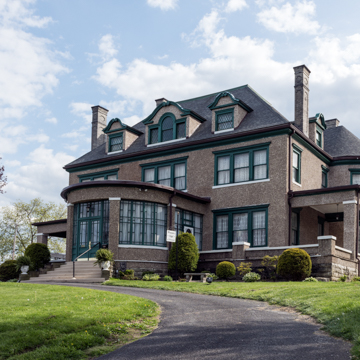You are here
Woman's Club of Fairmont (Thomas W. Fleming House)
This stuccoed mansion standing near a bluff enjoys grand views of the river and downtown from broad triple windows, a glazed conservatory-vestibule, and expansive side porches. Rounded bays that terminate in dormered extensions of the hipped roof center both side elevations. The expansive attic has a number of dormers; the central one contains a Palladian motif similar to that on the Marion County sheriff's residence ( MA2), known to have been designed by Wood. Interiors are spacious, and rooms flow into each other through generously scaled openings. The oval-shaped dining room contains elaborate plaster ornamentation.
Thomas W. Fleming, a two-term mayor of Fairmont, was involved in a number of real estate ventures that promoted the city's growth. He was also a major developer of the region's coal mines. The Woman's Club of Fairmont, organized in the house in 1906, purchased it following Fleming's death in 1937. The building continues in use as a clubhouse and stands as one of the last survivors of a once fashionable neighborhood.
Writing Credits
If SAH Archipedia has been useful to you, please consider supporting it.
SAH Archipedia tells the story of the United States through its buildings, landscapes, and cities. This freely available resource empowers the public with authoritative knowledge that deepens their understanding and appreciation of the built environment. But the Society of Architectural Historians, which created SAH Archipedia with University of Virginia Press, needs your support to maintain the high-caliber research, writing, photography, cartography, editing, design, and programming that make SAH Archipedia a trusted online resource available to all who value the history of place, heritage tourism, and learning.














